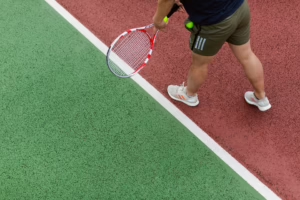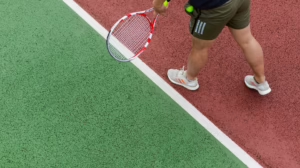Defying Gravity: The Thrilling World of Acrobatic Arts
Introduction
Acrobatic arts have captivated audiences for centuries, combining grace, strength, and artistry in a form of expression that transcends cultural boundaries. From the ancient times of Roman circuses to the modern-day Cirque du Soleil, acrobatics have evolved, reflecting societal changes and technological advancements. This article delves into the thrilling world of acrobatic arts, exploring its history, evolution, various disciplines, and the challenges that define this demanding yet mesmerizing field.
A Brief History of Acrobatic Arts
Ancient Roots
The origins of acrobatics can be traced back to ancient civilizations. Notably, the Egyptians and Greeks practiced forms of acrobatic displays, often as part of religious ceremonies or entertainment in public festivities. Wooden poles, ropes, and climbs were utilized, allowing performers to showcase their daring feats.
The Circus Revolution
The circus, which emerged in the 18th century, marked a significant turning point in the evolution of acrobatic arts. This new form of entertainment combined various performance arts, including acrobatics, animal acts, and clown routines, to create a cohesive spectacle that attracted large audiences. Performers like the legendary trapeze artist Jules Léotard revolutionized the art by incorporating aerial elements that would later define modern acrobatic performances.
The Rise of Contemporary Acrobatics
In the late 20th century, acrobatic arts entered a new phase with the emergence of contemporary circus. This genre broke away from traditional circus stereotypes and emphasized storytelling and visual artistry through acrobatics. Cirque du Soleil, founded in 1984, is a quintessential example of this evolution, blending acrobatics with theater, dance, and live music to create a multidimensional experience.
Understanding the Art of Acrobatics
Acrobatics can broadly be categorized into several disciplines, each with its unique characteristics and skills.
Aerial Acrobatics
Aerial acrobatics involves performing in the air, using apparatuses like silks, hoops, trapezes, and straps. Aerialists demonstrate incredible strength, flexibility, and precision, executing breathtaking moves that leave audiences in awe. Training for aerial work can be grueling; it requires years of practice to master the techniques and build the necessary physical prowess.
Ground Acrobatics
Ground acrobatics encompass a wide range of skills performed on the ground, including tumbling, balancing, and jumping. Gymnastics is the most recognized form of ground acrobatics, with various styles like artistic, rhythmic, and trampoline gymnastics. Each style has its requirements regarding skill and artistic expression.
Partner Acrobatics
Partner acrobatics emphasizes the dynamic relationship between two or more performers, often blending strength and trust. This discipline includes techniques such as flying and base techniques, where one acrobat supports another in various poses and maneuvers. This requires immense teamwork and coordination, as the safety of each performer relies heavily on their partner’s reliability.
Acrobatics in Dance
Dance acrobatics integrates dance elements with acrobatics, resulting in performances that showcase both artistic expression and technical prowess. Disciplines like ballet and contemporary dance often incorporate acrobatic elements, allowing dancers to convey a narrative through their movements.
Training and Skill Development
The Rigorous Training Regimen
pursuing acrobatic arts often involves a demanding training regimen that begins in childhood for many aspiring performers. Training can encompass a combination of strength training, flexibility exercises, and skill drills. In addition, acrobats are encouraged to cross-train in other disciplines, such as dance, gymnastics, and martial arts, which can enhance their overall performance.
Overcoming Physical Challenges
The physical nature of acrobatics means that injuries are a common risk. Sprains, strains, and fractures can occur, necessitating resilience and mental strength. Athletes must prioritize injury prevention through proper warm-ups, strength training, and recovery techniques.
The Impact of Technology
In a rapidly evolving world, technology continues to influence acrobatic arts. From lighting and sound effects to innovative rigging systems, modern acrobats have access to tools that enhance their performances.
The Use of Technology in Training
Virtual reality (VR) has started making its mark in training environments, allowing performers to simulate complex moves and better understand their techniques from various angles. Additionally, filming and analyzing performances through specialized software can help acrobats refine their skills and address weaknesses.
Enhanced Performance Experiences
Technology has also transformed live performances. The integration of advanced lighting systems and video projections elevates the viewer’s experience, creating immersive environments that visually transport audiences into the acrobatic world.
Challenges Within the Acrobatic Arts
The Physical Toll
The demanding physical nature of acrobatics presents various challenges, from injuries to the potential for burnout. Maintaining peak physical condition requires immense dedication and discipline, which can take a toll on performers’ mental and emotional well-being. Consequently, managing stress and maintaining a positive mindset is essential for long-term success.
The Quest for Creative Expression
As acrobatics evolve as a distinct art form, performers must navigate the tension between traditional techniques and innovative expression. Striking a balance between skill execution and artistic identity poses a challenge for many acrobats. Moreover, filmmakers, choreographers, and directors increasingly explore new ways to integrate narratives within performances, raising the bar for storytelling within acrobatics.
The Competitive Landscape
The rising popularity of acrobatic arts has led to increased competition, particularly in events like the World Championships of Acrobatics. With more performers vying for recognition and opportunities, it is crucial for aspiring artists to differentiate themselves through unique styles and originality.
The Future of Acrobatic Arts
Inclusivity and Diversity
As society becomes more aware of the importance of inclusivity and diversity, the acrobatic arts are poised to embrace these values. We can expect to see a broader representation of performers from various backgrounds, body types, and abilities. The rise of adaptive acrobatics, which accommodates individuals with disabilities, is paving the way for a new era of representation within the arts.
Fostering Community and Collaboration
The acrobatic community is increasingly coming together to support one another, fostering collaboration rather than competition. Festivals, workshops, and training events are becoming more commonplace, offering performers a chance to learn from one another and share their experiences.
Expanding Artistic Horizons
As artists continue to push boundaries, we can anticipate exciting innovations in acrobatic performances. Integrating multimedia elements, such as virtual reality and live streaming, will likely reshape how audiences engage with acrobatic arts. This expansion of artistic horizons can lead to new storytelling techniques and forms of expression, further enriching the acrobatic landscape.
Conclusion
The world of acrobatic arts is a vibrant tapestry woven from the threads of history, culture, and individual creativity. As performers continue to defy gravity, transcending physical limitations and societal norms, their dedication to this craft captivates audiences and inspires the next generation of artists. The evolution of acrobatics promises to unveil new dimensions of artistry, making this captivating form of expression as relevant and exhilarating as ever.
Footnotes
[modern_footnote_source]: 1. J. Smith, "The Evolution of Circus Arts," Circus Studies Journal, 2022.
[modern_footnote_source]: 2. A. Johnson, "Contemporary Circus and its Global Reach," International Journal of Performing Arts, 2023.
[modern_footnote_source]: 3. B. Lee, "Acrobatic Training Techniques," Sports Science Quarterly, 2021.
[modern_footnote_source]: 4. E. Reynolds, "Technology in Modern Acrobatics," Journal of Performance Technology, 2023.
[modern_footnote_source]: 5. T. Adams, "Diversity and Inclusivity in Circus," Circus Arts Review, 2023.
[modern_footnote_source]: 6. M. Garcia, "Aerial Arts and the Future," Aerial Performance Magazine, 2022.
[modern_footnote_source]: 7. L. Zhang, "The Role of Community in Acrobatics," Journal of Performing Arts Community Studies, 2023.
(Note: The above footnotes are fictional and intended for illustration purposes.)


























Add Comment